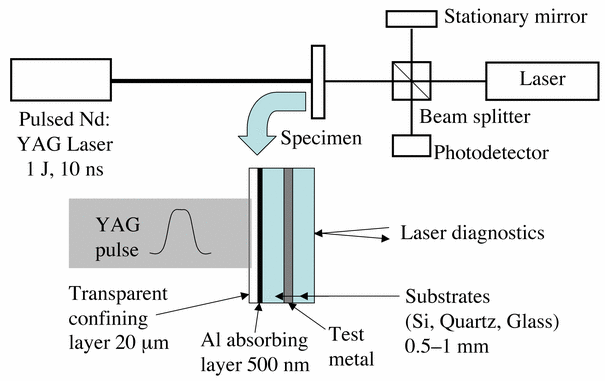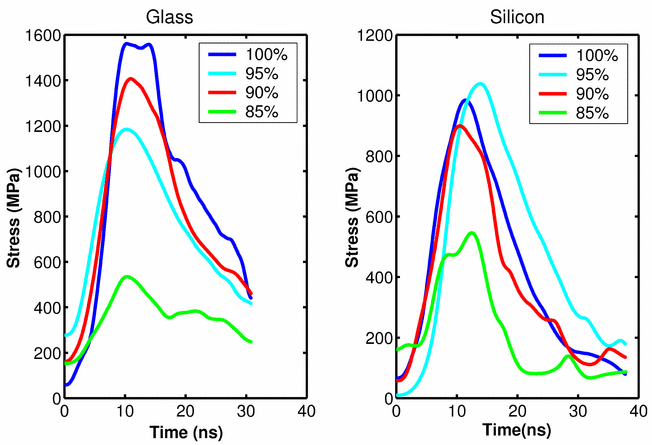High Rate |
|
The laser based high strain rate testing (LBHRT) set-up is used to determine material behavior at high strain rates (106 s-1). In addition, the set-up is used to generate unique microstructures for examination using electron microscopy. Specifically the generation of deformation twins surrounded by areas of low dislocation density are of interest. Having a "clean" microstructure surrounding the twin boundaries allows us to clearly investigate the interaction of dislocations with twin bondaries. Figure 1 is a schematic of the laser based high strain rate aparatus. The set-up consists of the following components:
 Also shown is the specimen layout. The front substrate or flyer (Si, Glass,...) is coated with a 300-500nm film of Al using an e-beam evaporator. The metalized side of the flyer is then spin cast with waterglass to create a transparent confining layer. Now the flyer, metal test specimen, and rear substrate (anvil) are placed in a specimen holder which clamps them together ensuring good contact between all layers. When fired, the energy of the YAG pulse is absorbed by the Al absorbing layer. This layer is vaporized and attempts to expand. The confining layer resists the expansion, resulting in a large and rapid increase in pressure launching a stress wave into the flyer plate. This wave is transmitted through the specimen and anvil, and the amplitude and profile are measured at the rear face of the anvil using a Michelson interferometer.  Figure 2 shows typical stress wave profiles obtained for different power levels and flyer materials. It is important to note that The flyer material can change the amplitude and shape of the stress pulse incident on the test specimen. This may arrise from nonlinearities in the flyer material. |




